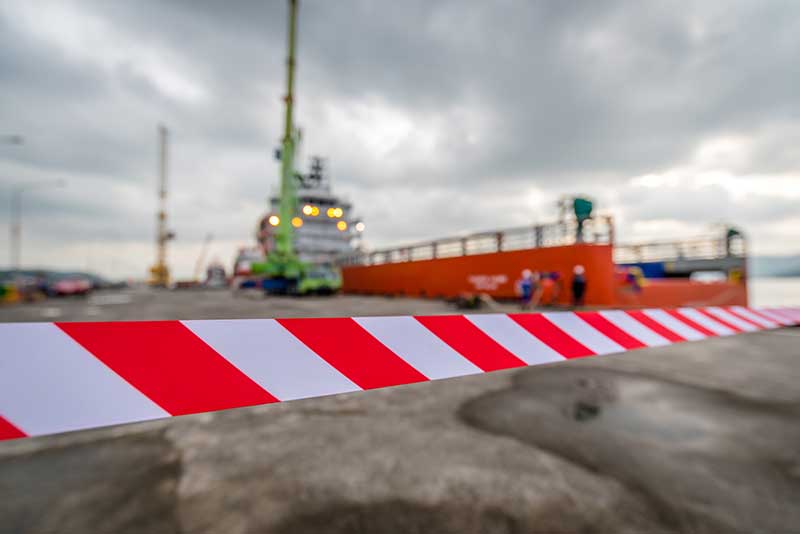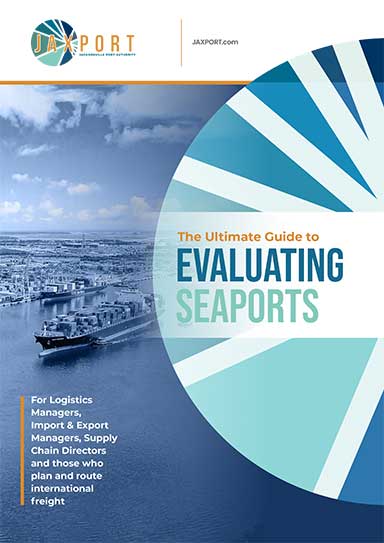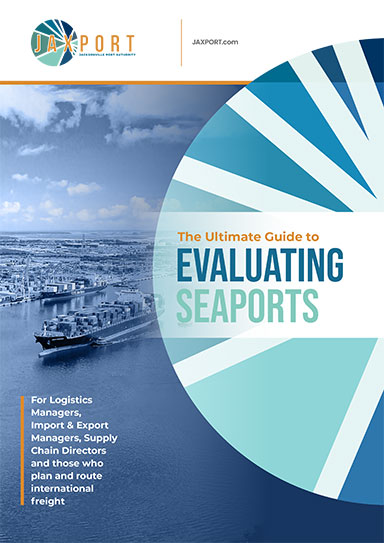Nimble shippers coping with Baltimore port closing by shifting plans
Turns out Baltimore needs the supply chain more than the supply chain needs Baltimore.
In the wake of the March 26 horrific bridge collapse that closed the Port of Baltimore to maritime vessels, shutting down one of the busiest ports in America has meant … not that much to maritime shippers. They just moved freight to New York, Newport News, Va., or Savannah, Ga.
In an era of excess truck capacity, shippers have had little problems rerouting shipments around Baltimore. But those truckers have had to face a half-hour detour around Baltimore as hazmat trucks are prohibited in Baltimore’s twin tunnels under the Chesapeake Bay. That’s the alternative route now that the Francis Scott Key Bridge is no more.
“It causes us a half-hour detour each way running our hazardous materials from the East Coast to our southern terminals,” Chuck Hammel, president of Pitt Ohio, told LM. “But a big deal to us is this will take years to complete the bridge. We’ll be dealing with it for a long time.”
As the shock on Baltimore fades, the bridge collapse could impact the local economy for years. Clearing the Patapsco River and rebuilding the bridge will be monumental, complex tasks involving numerous local, state and federal agencies.
“This is a national issue that affects the supply chain for all of America,” Rep. Kweisi Mfume, D-Md., said recently.
The U.S. Corps of Engineers is estimating the Port of Baltimore will reopen for maritime traffic with “limited access” by the end of April. Full operations are expected by the end of May, the Corps said.
Rescue personnel are working 24/7 to open a channel for maritime traffic to return. But rebuilding the bridge will take years. And even short-term fixes such as re-opening the port—which employs 8,000 people directly, and indirectly 20,000 including truckers and other personnel—will be costly.
While the Baltimore region is grappling with a crisis that could put thousands out of work and cost millions of dollars in economic activity, experts say the supply chain is pivoting—and fast.
CSX for example, has begun diverting international freight to New York and is considering moving more coal to Virginia terminals. It is still sending coal trains to Baltimore, but it is examining coal terminals it serves in Newport News, Va., for its export business.
Transportation Secretary Pete Buttigieg met with about 40 transport, labor, port, and trucking leaders on a conference call the week after the bridge collapse. He said he was optimistic there was enough capacity to offset the Port of Baltimore closing indefinitely. The Baltimore port handled between $100 million and $200 million worth of goods every day, ranking as the 11th-largest in the country, handling a record $52.3 million tons of freight last year.
President Joe Biden visited the area on April 5 for first-hand look. The president pledged federal support “every step of the way” and said he would press Congress to fund the cost of rebuilding the 1.6-mile bridge that could cost more than $1 billion. The plan is to fully reopen the crippled Port of Baltimore by the end of May.
“We’re going to move heaven and earth to rebuild this bridge as rapidly as humanly possible,” Biden said after visiting families of six immigrant workers who were killed and fell into the Patapsco River when the bridge collapsed.
“We will do so with union labor and American steel,” Biden promised.
Labor unions discussed how they are communicating with ports to ensure each port has sufficient labor to cover increased traffic. Baltimore-based participants emphasized 8,000 port jobs are dependent on the Port of Baltimore and the urgency behind opening the channel.
The plan is to create a temporary alternate channel near the collapsed bridge that will allow commercial vessels to access the port.
The channel will span the northeast side of the bridge, which fell into the Patapsco River after the crash.
“This will mark an important first step along the road to reopening the port of Baltimore,” said Capt. David O’Connell, the coordinator of the federal response to the bridge collapse, in a statement on March 31. “By opening this alternate route, we will support the flow of marine traffic into Baltimore.”
The temporary channels opened already have a controlling depth of 14 feet, vertical clearance of 96 feet and a 264-foot horizontal clearance. By comparison, the Dali is about 158 feet wide and 984 feet long.
Currently just one dock in the Port of Baltimore—Tradepoint Atlantic on Sparrows Point, site of the defunct Bethlehem Steel plant—is fully operational right now. That’s because it lies just beyond the site of the former Key Bridge.
But Tradepoint is limited for maritime. It is home to auto terminals for BMW and Volkswagen and has tons of warehouse space for giants Amazon, FedEx, McCormick and others. It was able to accept a regularly scheduled vessel for Volkswagen two days after the bridge collapse, but is limited for other shippers.
Ocean carriers are diverting cargo to rival East Coast ports, both in the near and medium term. Railroads told Buttigieg and others on the call they stand ready to be a part of the solution as shippers and other participants work through the challenges stemming from the cargo diversions.
“We are much better equipped to mitigate supply chain disruptions than we were just a few years ago, thanks to increased coordination across the supply chain and new efforts to strengthen both our physical and digital infrastructure,” Buttigieg said.
Even as Gov. Wes Moore called the Key Bridge collapse a global crisis that will snarl international trade, ships once bound for Baltimore were diverting to other U.S. ports.
“I think the big impact is local,” Marc Levinson, an economist and historian who studies global shipping, told the Baltimore Banner.
Even before the Key Bridge disaster, global supply chains were proving nimble in other regions of the world. Houthi rebels attacking ships bound for the Suez Canal caused rerouting on the fly. The war in Ukraine is pushing countries to cut economic ties with Russia.
Estimates are the Baltimore bridge collapse affects about 5% of U.S. trade, mostly specific commodities such as imported cars and exported coal. That could lead to higher transportation costs and longer delivery times for those items. But experts say the worldwide supply chain will be fine.
There is good news for Baltimore. A nimble supply chain means commerce can quickly route back to Baltimore when its port fully reopens.
“That said, the Port of Baltimore is an important port,” Buttigieg said. “So, for our supply chains and for all the workers who depend on it for their income, we’re going to help to get it open as soon as safely possible.’













